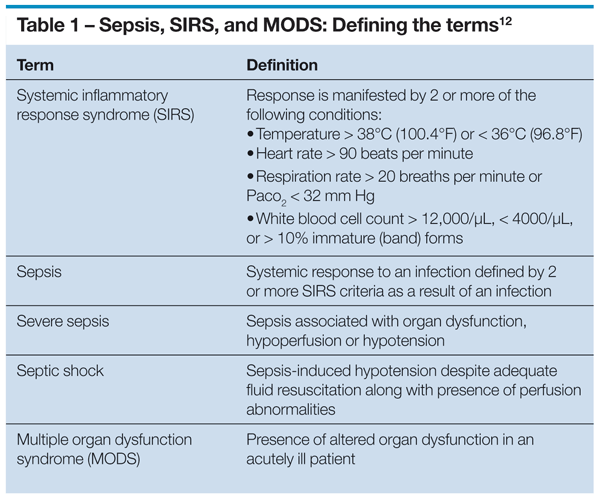What does the medical term septic mean. Sepsis: Understanding the Life-Threatening Response to Infection
What is sepsis and how does it develop. Who is at risk for sepsis and what are the symptoms. How is sepsis diagnosed and treated. What are the complications and long-term effects of sepsis. How can sepsis be prevented.
The Nature of Sepsis: A Medical Emergency
Sepsis is a severe and potentially life-threatening condition that occurs when the body’s response to infection spirals out of control. It represents a critical medical emergency that demands immediate attention and intervention. But what exactly happens during sepsis?
During sepsis, the body’s immune system, which normally fights off harmful pathogens, goes into overdrive. This exaggerated response triggers a cascade of events that can lead to widespread inflammation, blood clotting, and ultimately, organ failure. The condition can progress rapidly, making quick recognition and treatment crucial for survival.
The Prevalence of Sepsis
The impact of sepsis on public health is substantial. In the United States alone:
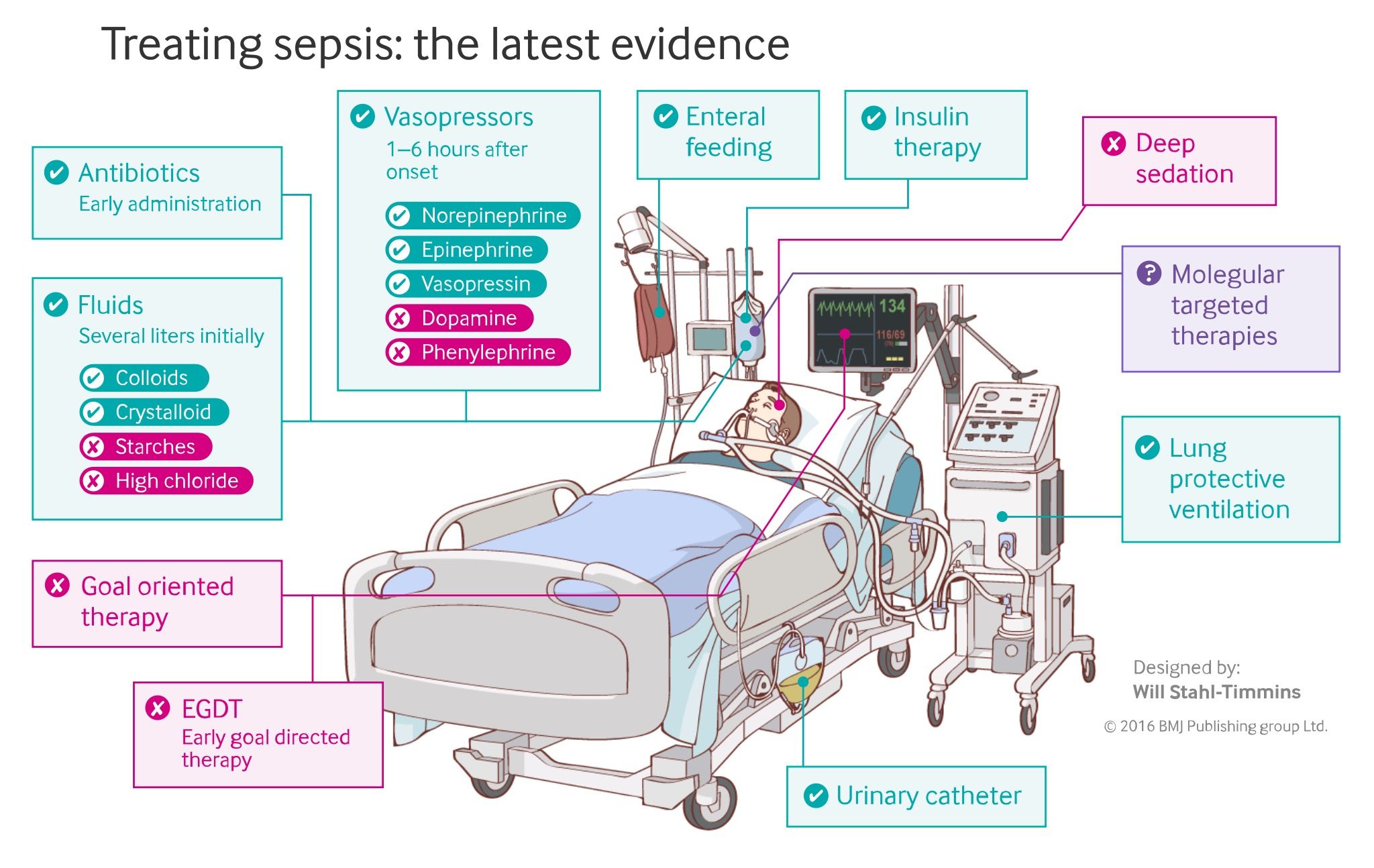
- At least 1.7 million adults develop sepsis annually
- Approximately 350,000 adults who develop sepsis die during hospitalization or are discharged to hospice
- One in three hospital deaths involves sepsis
- Nearly 87% of sepsis cases originate outside of the hospital setting
These statistics underscore the importance of sepsis awareness and early intervention. Can sepsis be prevented? While not all cases are preventable, understanding the risk factors and recognizing early signs can significantly improve outcomes.
The Origins and Progression of Sepsis
Sepsis typically begins with a localized infection that spreads and triggers a systemic response. The most common sites of initial infection include:
- Lungs (pneumonia)
- Urinary tract
- Skin
- Gastrointestinal tract
While bacterial infections are the most frequent cause of sepsis, viral infections like COVID-19 and influenza, as well as fungal infections, can also lead to this condition. Is sepsis contagious? No, sepsis itself cannot be transmitted from person to person. However, the underlying infections that may lead to sepsis can often be contagious.

The Sepsis Cascade
The progression of sepsis involves a complex interplay of inflammatory mediators, coagulation factors, and cellular dysfunction. This process can be broken down into several stages:
- Initial infection triggers an immune response
- Excessive inflammation leads to widespread tissue damage
- Blood clotting mechanisms become dysregulated
- Organs begin to fail due to reduced blood flow and cellular damage
- In severe cases, septic shock develops, characterized by a dramatic drop in blood pressure
Understanding this cascade is crucial for healthcare providers to intervene effectively at various stages of the condition.
Identifying High-Risk Populations for Sepsis
While sepsis can affect anyone, certain groups are at higher risk for developing this condition. Who should be particularly vigilant about the possibility of sepsis?
- Adults aged 65 or older
- Individuals with compromised immune systems
- People with chronic medical conditions (e.g., diabetes, lung disease, cancer, kidney disease)
- Those who have recently experienced severe illness or hospitalization
- Survivors of previous sepsis episodes
- Children under one year of age
For these high-risk groups, any infection should be taken seriously and monitored closely for signs of progression to sepsis. How can individuals in these groups protect themselves? Regular check-ups, prompt treatment of infections, and maintaining overall health through vaccination and lifestyle choices are key strategies.
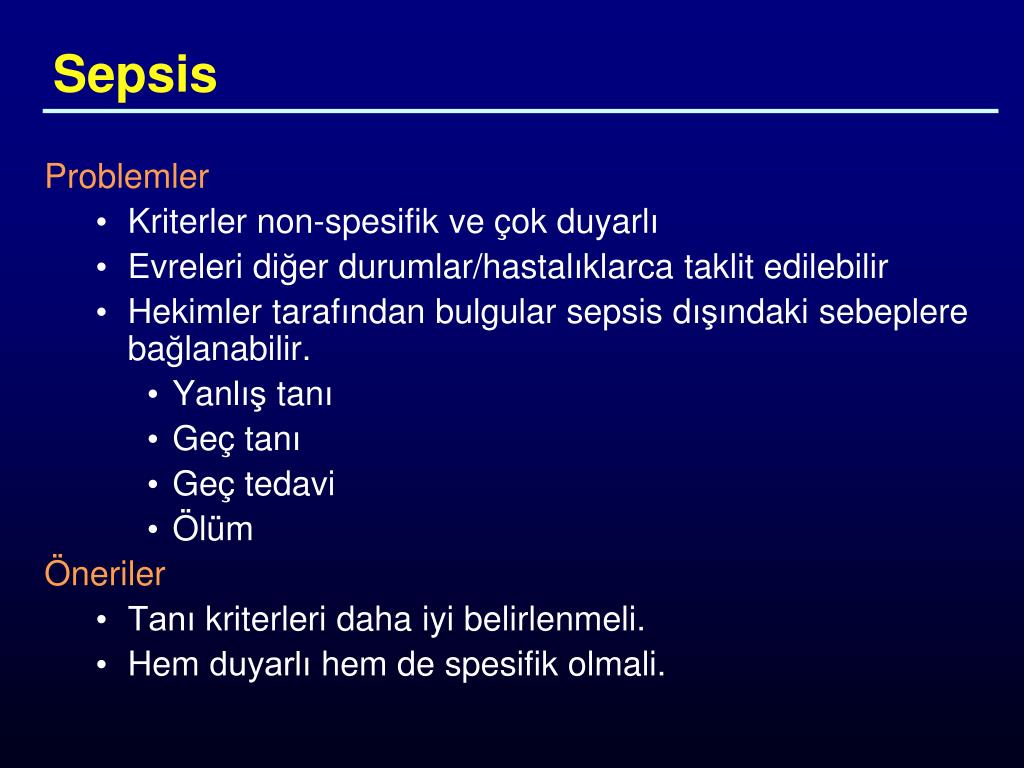
Recognizing the Signs and Symptoms of Sepsis
Early recognition of sepsis is crucial for timely intervention and improved outcomes. What symptoms should raise suspicion of sepsis?
- Elevated heart rate or weak pulse
- Confusion or disorientation
- Extreme pain or discomfort
- Fever, shivering, or feeling unusually cold
- Shortness of breath
- Clammy or sweaty skin
It’s important to note that these symptoms can vary between individuals and may present differently in children compared to adults. Are there specific signs that indicate a progression to septic shock? Yes, additional symptoms of septic shock may include:
- Inability to stand
- Extreme drowsiness or difficulty staying awake
- Significant changes in mental status, such as severe confusion
If any combination of these symptoms is observed, especially in the context of a known or suspected infection, immediate medical attention is crucial.
Diagnostic Approaches and Treatment Strategies for Sepsis
Diagnosing sepsis requires a comprehensive medical assessment. Healthcare professionals typically use a combination of clinical observations, laboratory tests, and imaging studies to confirm the presence of sepsis and identify the underlying infection.

Diagnostic Tools
- Blood tests to check for signs of infection, organ dysfunction, and abnormal clotting
- Urine tests to identify urinary tract infections
- Imaging studies such as X-rays, CT scans, or MRIs to locate sources of infection
- Microbiological cultures to identify specific pathogens
Once sepsis is diagnosed, how is it treated? Treatment for sepsis is multifaceted and typically occurs in an intensive care unit. The primary components of sepsis treatment include:
- Antibiotics: Broad-spectrum antibiotics are usually administered immediately, even before the specific pathogen is identified.
- Intravenous fluids: Large amounts of fluids are given to support blood pressure and organ function.
- Vasopressors: If fluids alone are not sufficient, medications to constrict blood vessels and raise blood pressure may be used.
- Oxygen therapy: Supplemental oxygen or mechanical ventilation may be necessary to support breathing.
- Organ support: Depending on the affected organs, dialysis, mechanical heart support, or other interventions may be required.
The goal of treatment is to eliminate the infection, support organ function, and prevent further complications. Is sepsis always treatable? While many people survive sepsis with prompt and appropriate treatment, it remains a serious condition with potential long-term effects.
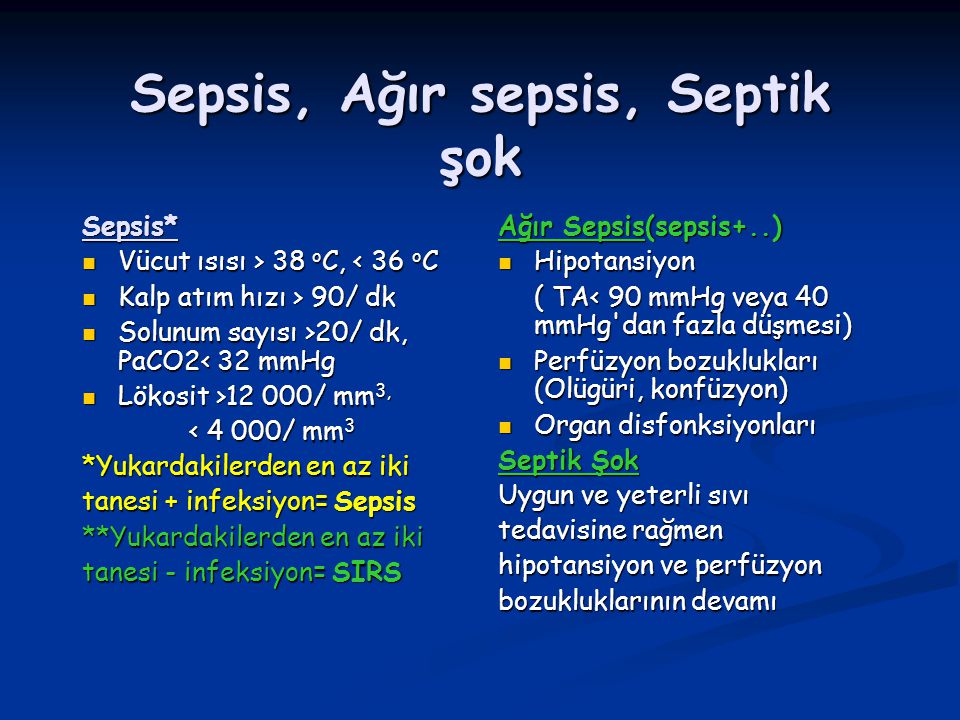
Long-Term Implications and Recovery from Sepsis
Surviving sepsis is a significant achievement, but the journey doesn’t end at hospital discharge. Many sepsis survivors face long-term health challenges. What are some of the potential long-term effects of sepsis?
- Increased risk of future infections
- Chronic pain or fatigue
- Cognitive impairment or memory problems
- Post-traumatic stress disorder (PTSD)
- Organ dysfunction, particularly affecting the kidneys or lungs
- Amputations due to tissue damage
The recovery process from sepsis can be prolonged and may require a multidisciplinary approach. Physical therapy, occupational therapy, and psychological support often play crucial roles in rehabilitation. How long does recovery from sepsis typically take? The duration of recovery varies widely among individuals, ranging from weeks to months or even years in some cases.
Post-Sepsis Syndrome
Some sepsis survivors experience a condition known as post-sepsis syndrome (PSS). This complex disorder can involve physical, cognitive, and emotional symptoms that persist long after the initial sepsis episode. Symptoms of PSS may include:

- Excessive fatigue and poor sleep
- Muscle and joint pain
- Decreased cognitive function
- Anxiety and depression
- Recurrent infections
Recognition of PSS is growing, and healthcare providers are increasingly aware of the need for long-term follow-up and support for sepsis survivors.
Preventive Measures and Public Health Strategies
While not all cases of sepsis can be prevented, there are several strategies that can reduce the risk of developing this life-threatening condition. What steps can individuals and healthcare systems take to prevent sepsis?
- Proper hand hygiene to reduce the spread of infections
- Timely vaccination against preventable diseases
- Prompt treatment of infections and wounds
- Careful management of chronic health conditions
- Adherence to infection control protocols in healthcare settings
Public health initiatives play a crucial role in sepsis prevention and management. These may include:
- Education campaigns to raise awareness about sepsis among the general public and healthcare providers
- Implementation of sepsis screening protocols in hospitals and emergency departments
- Development of standardized treatment guidelines for sepsis management
- Research into new diagnostic tools and treatment strategies
- Surveillance programs to track sepsis incidence and outcomes
How effective are these preventive measures? While challenges remain, concerted efforts in sepsis prevention and early intervention have shown promise in reducing sepsis-related morbidity and mortality.

The Future of Sepsis Research and Management
As our understanding of sepsis continues to evolve, new avenues for research and treatment are emerging. What are some promising areas of sepsis research?
- Biomarker discovery for early sepsis detection
- Immunomodulatory therapies to regulate the immune response
- Personalized treatment approaches based on genetic profiles
- Artificial intelligence for rapid sepsis prediction and diagnosis
- Novel antimicrobial strategies to combat drug-resistant pathogens
These research directions hold the potential to revolutionize sepsis management, potentially leading to more targeted treatments and improved outcomes. How might advances in sepsis research impact patient care in the future? We may see more precise diagnostic tools, tailored treatment protocols, and perhaps even preventive strategies for high-risk individuals.
Global Initiatives and Collaboration
Sepsis is a global health concern that requires international cooperation. Several global initiatives are underway to address the challenges posed by sepsis:
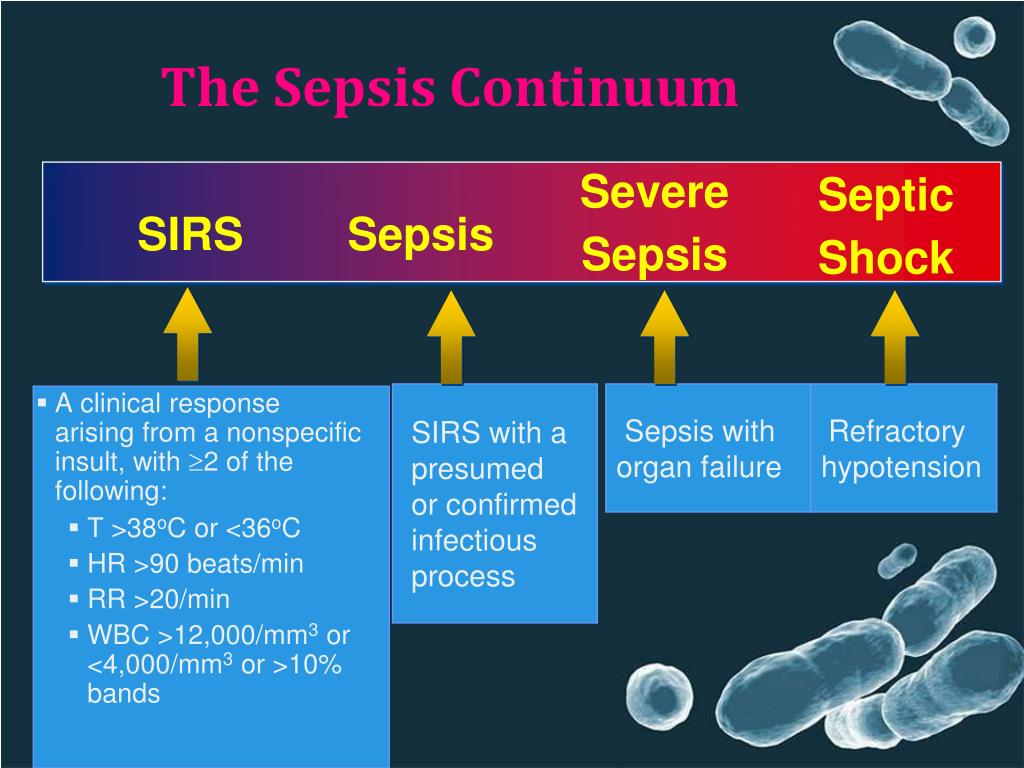
- The World Health Organization’s resolution on sepsis, emphasizing the need for improved prevention, diagnosis, and management
- The Global Sepsis Alliance, which coordinates worldwide efforts to combat sepsis
- International clinical trials collaborating on large-scale sepsis studies
- Efforts to standardize sepsis definitions and diagnostic criteria across different healthcare systems
These collaborative efforts aim to reduce the global burden of sepsis through shared knowledge, resources, and strategies. Can global initiatives make a significant impact on sepsis outcomes? While challenges remain, coordinated international efforts have the potential to drive substantial improvements in sepsis prevention, recognition, and treatment worldwide.
What is Sepsis? | Sepsis
- What is sepsis?
- Is sepsis contagious?
- What causes sepsis?
- Who is at risk?
- What are the signs & symptoms?
- What should I do if I think I might have sepsis?
- Fact Sheet, Brochure, and Conversation Starter
Anyone can get an infection, and almost any infection, including COVID-19, can lead to sepsis. In a typical year:
- At least 1.7 million adults in America develop sepsis.
- At least 350,000 adults who develop sepsis die during their hospitalization or are discharged to hospice.
- 1 in 3 people who dies in a hospital had sepsis during that hospitalization
- Sepsis, or the infection causing sepsis, starts before a patient goes to the hospital in nearly 87% of cases.
Sepsis is the body’s extreme response to an infection. It is a life-threatening medical emergency. Sepsis happens when an infection you already have triggers a chain reaction throughout your body. Infections that lead to sepsis most often start in the lung, urinary tract, skin, or gastrointestinal tract. Without timely treatment, sepsis can rapidly lead to tissue damage, organ failure, and death.
Sepsis happens when an infection you already have triggers a chain reaction throughout your body. Infections that lead to sepsis most often start in the lung, urinary tract, skin, or gastrointestinal tract. Without timely treatment, sepsis can rapidly lead to tissue damage, organ failure, and death.
Is sepsis contagious?
You can’t spread sepsis to other people. However, an infection can lead to sepsis, and you can spread some infections to other people.
Sepsis happens when…
Transcript: Sepsis happens when [TXT 1 1 KB]
What causes sepsis?
Infections can put you or your loved one at risk for sepsis. When germs get into a person’s body, they can cause an infection. If you don’t stop that infection, it can cause sepsis. Bacterial infections cause most cases of sepsis. Sepsis can also be a result of other infections, including viral infections, such as COVID-19 or influenza, or fungal infections.
Top of Page
Who is at risk?
Anyone can develop sepsis, but some people are at higher risk for sepsis:
Adults 65 or older
People with weakened immune systems
People with chronic medical conditions, such as diabetes, lung disease, cancer, and kidney disease
People with recent severe illness or hospitalization
People who survived sepsis
Children younger than one
Top of Page
What are the signs & symptoms?
A person with sepsis might have one or more of the following signs or symptoms:
High heart rate or weak pulse
Confusion or disorientation
Extreme pain or discomfort
Fever, shivering, or feeling very cold
Shortness of breath
Clammy or sweaty skin
A medical assessment by a healthcare professional is needed to confirm sepsis.
Top of Page
What should I do if I think I might have sepsis?
Sepsis is a medical emergency. If you or your loved one has an infection that’s not getting better or is getting worse, ACT FAST.
Get medical care IMMEDIATELY. Ask your healthcare professional, “Could this infection be leading to sepsis?” and if you should go to the emergency room.
If you have a medical emergency, call 911. If you have or think you have sepsis, tell the operator. If you have or think you have COVID-19, tell the operator this as well. If possible, put on a mask before medical help arrives.
With fast recognition and treatment, most people survive. Treatment requires urgent medical care, usually in an intensive care unit in a hospital, and includes careful monitoring of vital signs and often antibiotics.
Top of Page
Fact Sheet, Brochure, and Conversation Starter (Print Only)
Protect Yourself and Your Family from Sepsis [PDF – 2 pages]
It’s Time to Talk about Sepsis [PDF – 2 pages]
Start the Conversation Today [PDF – 2 Pages]
Top of Page
Sepsis – Symptoms & causes
Overview
Sepsis is a serious condition in which the body responds improperly to an infection. The infection-fighting processes turn on the body, causing the organs to work poorly.
The infection-fighting processes turn on the body, causing the organs to work poorly.
Sepsis may progress to septic shock. This is a dramatic drop in blood pressure that can damage the lungs, kidneys, liver and other organs. When the damage is severe, it can lead to death.
Early treatment of sepsis improves chances for survival.
Products & Services
Symptoms
Symptoms of sepsis
Symptoms of sepsis may include:
- Change in mental status.
- Fast, shallow breathing.
- Sweating for no clear reason.
- Feeling lightheaded.
- Shivering.
- Symptoms specific to the type of infection, such as painful urination from a urinary tract infection or worsening cough from pneumonia.
Symptoms of sepsis are not specific. They can vary from person to person, and sepsis may appear differently in children than in adults.
Symptoms of septic shock
Sepsis may progress to septic shock.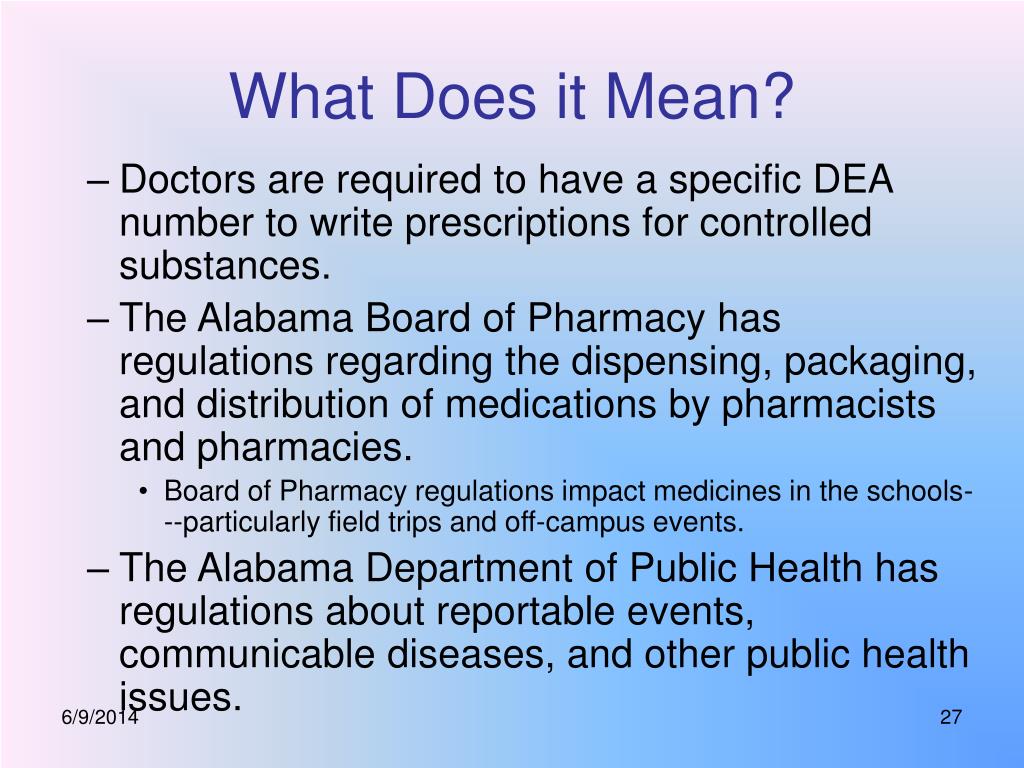 Septic shock is a severe drop in blood pressure. Progression to septic shock raises the risk of death. Symptoms of septic shock include:
Septic shock is a severe drop in blood pressure. Progression to septic shock raises the risk of death. Symptoms of septic shock include:
- Not being able to stand up.
- Strong sleepiness or hard time staying awake.
- Major change in mental status, such as extreme confusion.
When to see a doctor
Any infection could lead to sepsis. Go to a health care provider if you have symptoms of sepsis or an infection or wound that isn’t getting better.
Symptoms such as confusion or fast breathing need emergency care.
Causes
Any type of infection can lead to sepsis. This includes bacterial, viral or fungal infections. Those that more commonly cause sepsis include infections of:
- Lungs, such as pneumonia.
- Kidney, bladder and other parts of the urinary system.
- Digestive system.
- Bloodstream.
- Catheter sites.
- Wounds or burns.
Risk factors
Some factors that increase the risk infection will lead to sepsis include:
- People over age 65.

- Infancy.
- People with lower immune response, such as those being treated for cancer or people with human immunodeficiency virus (HIV).
- People with chronic diseases, such as diabetes, kidney disease or chronic obstructive pulmonary disease (COPD).
- Admission to intensive care unit or longer hospital stays.
- Devices that go in the body, such as catheters in the vein, called intravenous, or breathing tubes.
- Treatment with antibiotics in the last 90 days.
- A condition that requires treatment with corticosteroids, which can lower immune response.
Complications
As sepsis worsens, vital organs, such as the brain, heart and kidneys, don’t get as much blood as they should. Sepsis may cause atypical blood clotting. The resulting small clots or burst blood vessels may damage or destroy tissues.
Most people recover from mild sepsis, but the mortality rate for septic shock is about 30% to 40%.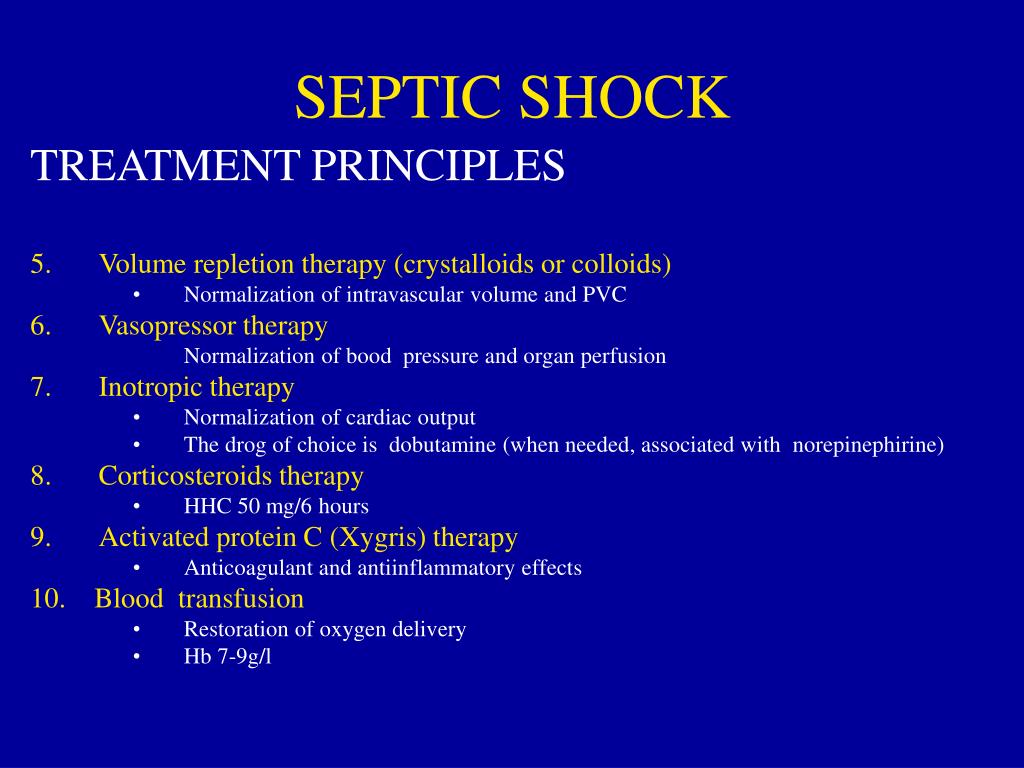 Also, an episode of severe sepsis raises the risk for future infections.
Also, an episode of severe sepsis raises the risk for future infections.
What does septic tank mean – Meanings of words
The section is very easy to use. In the proposed field, just enter the desired word, and we will give you
list of its values. I would like to note that
our site provides data from various sources – encyclopedic, explanatory, derivational
dictionaries. Also here you can meet
with examples of the use of the word you entered.
septic tank in the crossword dictionary
septic tank
- Underground sump for domestic wastewater treatment
- Water treatment tank
- Wastewater treatment plant element
- Element for wastewater treatment plant
- Plant for the treatment of small amounts of domestic wastewater
- Swimming pool in the sewer network for wastewater treatment
- Waste water treatment plant
Dictionary of medical terms
septic tank (Greek septikos, putrefactive)
see Septic tank.
Explanatory dictionary of the Russian language. D.N. Ushakov
septic tank
(se) and SEPTIKTANK (se), septic tank, m. Pool in the sewer network for wastewater treatment.
New explanatory and derivational dictionary of the Russian language, T. F. Efremova.
septic tank
m.
Pool in the sewer network for wastewater treatment.
Encyclopedic Dictionary, 1998
septic tank
SEPTIC (from Greek septikos – putrid) a facility for treating small amounts (up to 25 m3/day) of domestic wastewater. It is a horizontal type underground sedimentation tank, consisting of 1 or more chambers through which the waste liquid flows.
It is a horizontal type underground sedimentation tank, consisting of 1 or more chambers through which the waste liquid flows.
Great Soviet Encyclopedia
Septic tank
(eng. septic, from Greek septikós ≈ putrid, purulent), a facility for treating small amounts (up to 25 m3, rarely up to 50 m3 per day) of domestic wastewater. The sewage system is a horizontal underground sump consisting of 1≈3 chambers through which the waste liquid flows in succession. Wastewater pretreated (clarified) in S. is then subjected to biological treatment in underground filtration fields or in sand and gravel filters. In S. delayed until 90% suspended solids.
Wikipedia
Septic tank
Septic tank (sump ) — element of local treatment plant; used at the stage of design and construction of integrated systems for local treatment of domestic and household wastewater. A septic tank, as such, is not a complete treatment plant and is used in accordance with applicable rules and regulations. During the operation of the treatment plant, it is necessary to use methods of soil post-treatment.
A septic tank, as such, is not a complete treatment plant and is used in accordance with applicable rules and regulations. During the operation of the treatment plant, it is necessary to use methods of soil post-treatment.
The septic tank is designed to collect and treat household wastewater from individual residential buildings, low-rise buildings, cottages in the absence of a central sewerage system. The operation of the septic tank is based on the principle of gravitational settling and biological post-treatment using bioenzymatic preparations, as well as soil natural and forced post-treatment methods. These can be biofilters or bioloading.
The guide for the design, construction and operation of a septic tank is SNiP 2.04.03-85 “Sewerage. External networks and structures”.
SP 32.13330.2012 – Updated version of SNiP 2.04.03-85
What is a septic tank and how does it work?. NPO KVO
To create comfortable conditions in the country, most of the modern amenities are needed, including sewerage, which solves the problem of removing and treating domestic wastewater. A cesspool is a good option, but its productivity is very limited, and if a large water consumption is planned at the dacha, you need to be ready to clean it often, and this is due to inconveniences: an unpleasant smell and high prices for sewer services. In this article, we will consider how successfully the installation of a septic tank copes with the task of autonomous sewerage of a modern country house.
A cesspool is a good option, but its productivity is very limited, and if a large water consumption is planned at the dacha, you need to be ready to clean it often, and this is due to inconveniences: an unpleasant smell and high prices for sewer services. In this article, we will consider how successfully the installation of a septic tank copes with the task of autonomous sewerage of a modern country house.
What is a septic tank and how does it work?
Septic tank is a sewage treatment plant consisting of several chambers in which the wastewater treatment process takes place sequentially. Separate containers connected to each other by an overflow pipe can act as chambers, but most often a modern septic tank is a plastic tank divided into chambers by partitions. This one-piece design makes the device more compact and easier to install. One of the representatives of such treatment facilities in the modern market is the septic tank “Kedr” of the Unilos company.
Sewage flows into the first chamber of the septic tank, where it settles, causing sludge and solid waste to settle to the bottom, and water flows into the next chamber, where the process is repeated. To achieve a higher level of cleaning in a septic tank, biological agents can be used. It is important to note one feature of septic tanks: although they clean the drains, they do not produce water at the outlet that can be used for household purposes or discharged into a reservoir. Therefore, an obligatory component of a septic tank is a filtration field, a filtration well or an infiltrator.
What is a good septic tank and what are its disadvantages
The dream of every homeowner is a septic tank for giving without pumping. However, this is impossible, because the waste gradually accumulates, albeit at different rates, depending on the model of the septic tank. Therefore, regular cleaning is necessary. The advantage of a septic tank over a cesspool is that it is able to process a larger amount of wastewater and needs to be cleaned much less often. The maintenance process is also different: if a sewage truck is needed to pump out a cesspool, then sludge is removed from modern septic tanks by a built-in pump and can be used as fertilizer.
The maintenance process is also different: if a sewage truck is needed to pump out a cesspool, then sludge is removed from modern septic tanks by a built-in pump and can be used as fertilizer.
Among the disadvantages of septic tanks, it should be noted that enough space is needed to accommodate them. This is due to the fact that such a sewer cannot work without a filtration field, which requires additional free space on the site. In addition, the work of a septic tank depends on the ability of the soil to absorb water. Septic tanks for summer cottages with a high level of groundwater require additional devices, such as an intermediate well, etc., and this complicates and increases the cost of the design of an autonomous system.
An alternative to a septic tank
There are waste disposal systems that do not have the above disadvantages – biological treatment plants. They are often called septic tanks because of the similarity in design (they are also divided into chambers in which overflow and cleaning take place), but unlike classic septic tanks, they do not need a filtration field device.

